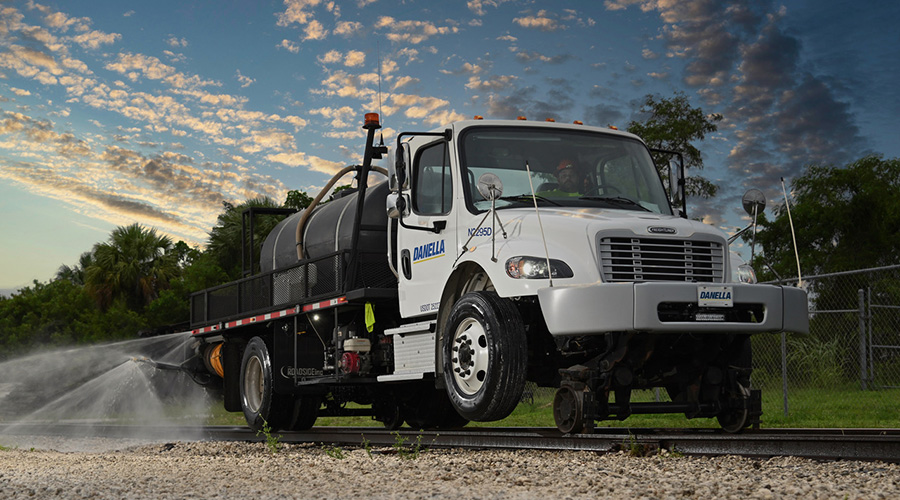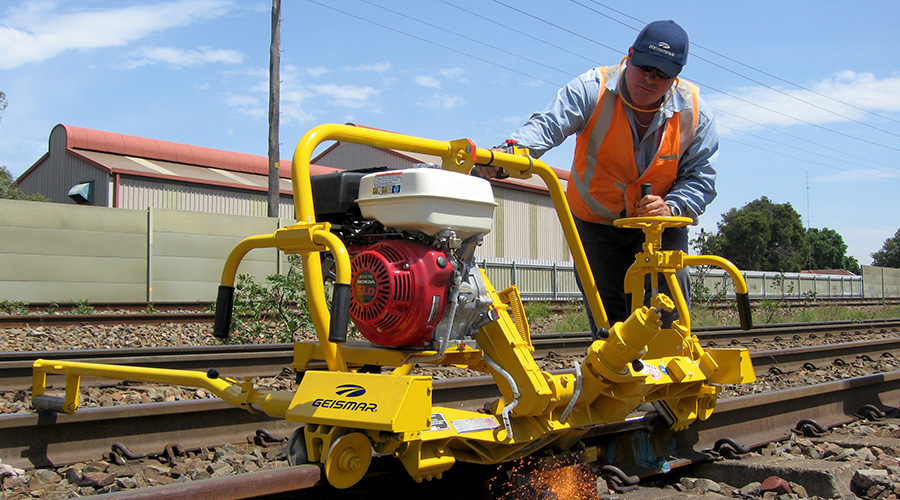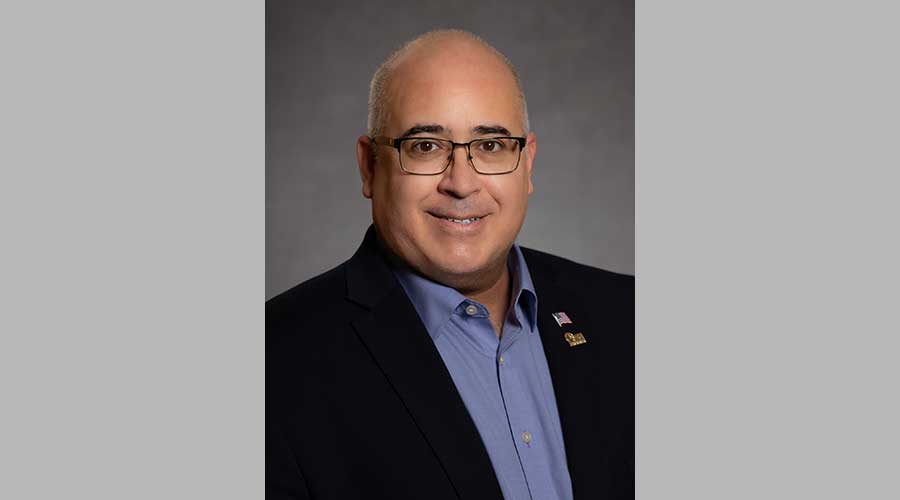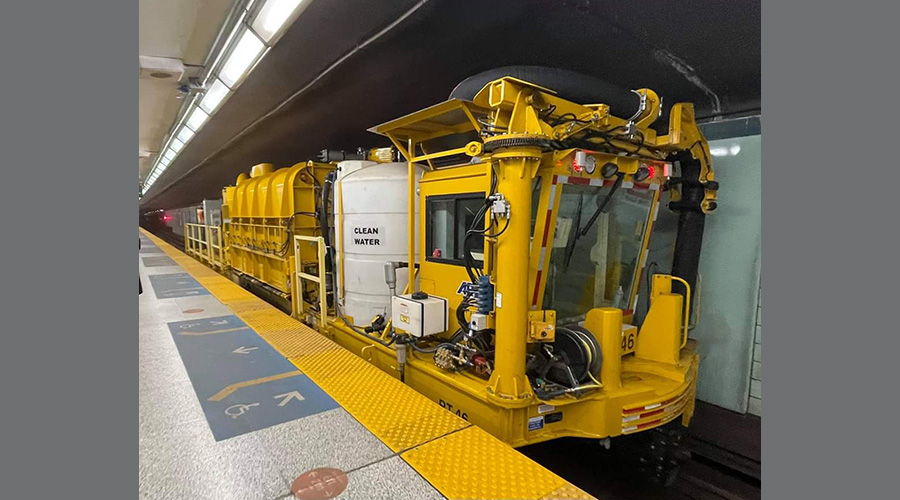Stay updated on news, articles and information for the rail industry
November 2007
Rail News: Short Lines & Regionals
MOW officials in their own words
Vern Graham • Canadian Pacific Railway
Don Bagley • CSX Transportation
Wayne E. Russell • Florida East Coast Railway L.L.C.
T.J. Drake • Norfolk Southern Railway
Bill Wimmer • Union Pacific Railroad
| Vern Graham • Canadian Pacific Railway |
| Vern Graham is Vice President, Engineering Operations for Canadian Pacific Railway. His rail career, which began in 1973 as an MOW extra gang laborer, includes stints at the Milwaukee and Soo Line railroads. Graham joined CPR in 1999 as General Manager, Field Operations. He was appointed AVP, Engineering Operations, in 2001, and promoted to his current post in 2003. |
What’s the biggest change that’s taken place in your department during the past five years, and how has that change affected the way you do your job?
With the growth in rail transportation in North America over the past five years, the biggest change in the MOW department has been the pressure to complete the work that has to be done within smaller track block windows. As a result, we created a high-performance “Capacity Management Work Block Planning Team” made up of people from the engineering, product design and material management departments. Team members work together to produce the most optimum track blocks that will facilitate the delivery of material, the maximum fluidity of the network for operations and the largest window of time for our MOW crews to perform their work.
What are the best opportunities for outsourcing MOW functions at your railroad? What doesn’t lend itself to outsourcing?
We have labor agreements in place and comply with the terms and conditions of those for the basic renewal work; thus, our basic infrastructure renewal is limited in outsourcing. We do outsource some work that fits within those specialty areas that we do not have expertise in or the ability to acquire the technology. When new technology is developed, and it is a specialty machine such as a flash butt electric welder, we will outsource those services. We also outsource much of our ditch renewal and shoulder ballast cleaners. Lastly, major construction projects such as what we did with our Westcap expansion was outsourced due to the need to complete the work within a limited construction season.
What’s the best recent example of how your department has made a tangible contribution to improving service reliability at your railroad?
As a result of capacity issues and our focus to improve the velocity and the fluidity of our network, we instituted the “SWARM” process for major track renewal on our network. Instead of having a tie crew work on multiple subdivisions a year, we now plan and execute our work on one or two subdivisions per high-production crew. Each tie crew will cover between 150 and 200 miles installing 125,000 to 175,000 ties. Within the SWARM, we will also plan our switch, culvert, bridge, joint reduction, crossing, ditching and ballast cleaning work. This reduces logistics for material distribution, improves the condition of this segment for multiple years and accelerates the renewal of the railway as a result of increased productivity. 
| Don Bagley • CSX Transportation |
| Don Bagley is Vice President-Engineering for CSX Transportation. From 1968 through 2000, he served in various engineering capacities with Norfolk Southern Railway and NS predecessor, the Southern Railway. Bagley joined CSXT as VP-Engineering in 2004. |
What’s the biggest change that’s taken place in your department during the past five years, and how has that change affected the way you do your job?
The power of technology has provided different tools. CSX recently implemented two computer programs to aid us in our work: FIRM for managing FRA inspections; and ITIS, the computer track inspection system. These systems provide benefits such as increased efficiency for field employees and managers by providing the means to update the Web-based database for all track assets; utilization of mobile computers for inspections and office work; batching of FRA reports; and providing timely, integrated, detailed information for all managers.
Track inspectors and managers use the ITIS system, which integrates geometry car exceptions, accurately locating them by way of GPS coordinates; and provides a Web-based system to manage these exceptions and log the remedial action taken. ITIS also integrates with the FIRM system to document and manage FRA track inspections electronically. These systems are tools for all levels of management, providing checks for inspection frequency compliance, due dates and defects found. It also recommends remedial action based on class of track, condition or maintenance items, and items nearing schedule limits. We no longer issue hand-written paper reports; data is entered via laptop.
CSX engineering and technology staffs also developed the Track Structure Capital Request Management System (TSCRMS). This Web-based process utilizes test car data, rail wear data, geometry data, field measurements and operational characteristics in order to identify potential capital program work locations. By using location data as well as managers’ input, rail and T&S programs are identified, evaluated, and approved using competitive ranking. This risk-based system has created a fact-based playing field, enhancing the decision-making process for the CSX network.
What’s the best recent example of how your department has made a tangible contribution to improving service reliability at your railroad?
From CSX’s operating plan — the “One Plan” — came our “Out of the Park” initiatives. One of these key initiatives is the “Curfew Planning” process. The goal is to maximize the available track time for engineering’s system production teams while minimizing the impact on train operations. The main objective is to create a scheduled curfew plan that enables engineering to complete all the heavy program maintenance work planned for the year — on time and without negatively impacting operations. So far this year, key measurements indicate that 98 percent of the planned work time has been given with the curfews starting on time 78 percent of the time; engineering forces have given back the curfew on time 96 percent of the time. With this advanced planning, engineering is able to meet the work plan’s objectives and still run the trains with minimal impact.
What are the best opportunities for outsourcing MOW functions at your railroad? What doesn’t lend itself to outsourcing?
In the MOW area, the outsourcing opportunities remain in the traditional specialty work (i.e., rail grinding, rail inspection, weed spray) and material logistics. Managing the inventory, yet having the material at the planned work location for the BMWE forces to utilize in the day-to-day operations, is critical to keeping slow orders to a minimum. The purchase and removal of the scrap materials includes a timely removal from behind our T&S and rail gangs — a key to providing a safe right of way for all CSX employees, and to our continuing efforts to protect the environment. Meanwhile, CSX continues to add track capacity to its system. The capacity track construction is being accomplished with a blend of CSX MOW forces and contractors’ forces, with contractors performing site work. For the larger projects, they’re completing track construction work.
The day-to-day maintenance, inspection and preventive actions are not a good outsourcing fit.

| Wayne E. Russell • Florida East Coast Railway L.L.C. |
| Wayne E. Russell is Vice President & Chief Engineer for Florida East Coast Railway L.L.C. (FEC) He began his railway career in 1964 as a chainman for the Santa Fe Railway, where he served in various engineering capacities for the next 35 years. He retired from BNSF (as Assistant Vice President of Maintenance) in 1999 and joined FEC in 2000. |
What’s the biggest change that’s taken place in your department during the past five years, and how has that change affected the way you do your job?
As in any business or endeavor, we are all seeking to improve. Regardless of the focus — whether it is to improve safety and productivity, reduce traffic interruptions, reduce costs, etc. — we have to take a hard look at tradition, our strengths and our weaknesses, and determine how best to accomplish the goals of the company.
Traditionally, as with almost all railroads, everything was accomplished with our own forces. But when we began to visit each area of the department, we found that our asset utilization was pretty poor. Unfortunately, we had equipment that was only being used 50 percent to 75 percent of the time. This was primarily due to the size of the property and the various types of projects that had to be completed each year. To make a long story short: We began rationalizing those assets that were underutilized in parallel with attrition.
Our primary focus today is enhancing our base workforce with the equipment and tools they need to maximize safety and efficiency.
What are the best opportunities for outsourcing MOW functions at your railroad? What doesn’t lend itself to outsourcing?
I pretty well beat up this subject up in responding to the first question, but to sum it up: Just about any work that requires special equipment and/or expertise that we cannot support the vast majority of the year will be considered for outsourcing. We like to work with service providers who have proven records for repeat business and, where possible, work with others where we can help them establish themselves with some of our lesser-used assets.
As mentioned above, time-sensitive traffic and Mother Nature are always going to challenge us. We need a basic workforce to handle surface problems, special trackwork and the day-to-day maintenance firefights.
What’s the best recent example of how your department has made a tangible contribution to improving service reliability at your railroad?
While our property is not highly seasonal, we do see more business in the fourth quarter. Keeping this in mind and considering the summer heat and potential for hurricane disruptions in this part of the country, we made a concerted effort this year to accomplish our heaviest work load in the first half of the year.
While we do have some programs that run continually throughout the year, we were able to accomplish our major work on the mainline by mid-July and then move into the yards. This approach will minimize the number of track windows and work-related slow orders during the time when the volume of time-sensitive traffic is at its highest.
| T.J. Drake • Norfolk Southern Railway |
| T.J. Drake is Vice President Engineering for Norfolk Southern Railway. He began his railway career in 1976 as a management trainee at NS, where he served in various engineering capacities — from tie inspector to division engineer-maintenance to assistant vice president MW&S — before being promoted to his current position earlier this year. |
What’s the biggest change that’s taken place in your department during the past five years, and how has that changeaffected the way you do your job?
I would say one of the biggest changes that has taken place in the MOW department in the last five years is the rapid departure of officer and agreement personnel. The training necessary to keep a competent workforce in order to perform the necessary technical skills needed to manage and maintain our railroad is monumental.
It takes years of experience and on-the-job training to develop the expertise to deal with the daily activities in running the railroad. Our present workforce is leaner than it was in the ‘70s, when we faced a similar challenge and were able to work through employee turnover by having a large amount of supervisors and employees to draw from who were knowledgeable and experienced. This has caused me to concentrate more on training, mentoring and succession plans, and keeping the additional staff necessary to [develop] a work ethic of safety and reliability.
What are the best opportunities for outsourcing MOW functions at your railroad? What doesn’t lend itself to outsourcing?
One of the best opportunities for outsourcing in MOW functions is specialty work, or projects the present MOW forces do not have the expertise or training in, or the equipment they need to provide the safest and most efficient result. Examples would include specialized bridge and trackwork, handling and unloading material, environmentally sensitive projects (asbestos, lead paint removal, etc.), and proper asphalt paving in line with federal and state run-off requirements.
For years, the railroad industry has prided itself on developing new and improved methods to perform track maintenance and production work — such as rail laying, as well as timber and surfacing work — that is better handled by the MOW workforce.
What’s the best recent example of how your department has made a tangible contribution to improving service reliability at your railroad?
The best example I can give of a capital project that we are currently undertaking is the expanded use of the in-track Superjack Flash Butt Welding Process to increase our thermit welding productivity and provide a safer, cleaner weld. One of the biggest issues facing MOW is to improve service reliability and to maximize production in minimal work windows, as well as provide a higher level of track quality to minimize unplanned maintenance activities.

| Bill Wimmer • Union Pacific Railroad |
| Bill Wimmer is Vice President - Engineering for the Union Pacific Railroad. He is responsible for all aspects of engineering, which includes design, construction signal, structures, track programs and maintenance. He began his railroad career in 1957 with the Chicago and Northwestern Railroad. |
What’s the biggest change that’s taken place in your department during the past five years, and how has that change affected the way you do your job?
The most significant change in the past five years has been the remarkable advancements in technology. The ballast trains that can be unloaded at 15 mph to 20 mph using a computer program that is driven by GIS technology is one of those quantum leaps forward in ballast delivery. Our laser ballast measuring system that provides the data to build unloading programs for these trains is an example of how advancement in one process drives the opportunity for additional advancements. Now, not only can we deliver ballast much faster and safer, but we are delivering the exact amount of ballast needed. We can accurately plan on the amount of ballast needed to finish a tie renewal or track surfacing project without worrying about missing the estimated ballast requirement.
The electric induction rail heating system on our new track renewal train is another technological advancement that brings greater efficiency, as well as safety. The induction heating system is much more accurate than our traditional propane heating systems and eliminates the safety issues that are inherent in open flame heating.
These are only a couple examples of how technology is allowing us to keep up with the ever-increasing maintenance needs being driven by record volumes of traffic in the railroad industry.
What are the best opportunities for outsourcing MOW functions at your railroad? What doesn’t lend itself to outsourcing?
New construction projects continue to be our best opportunity to outsource MOW functions. Advancements in technology, as mentioned earlier, present another opportunity. Outsourcing traditional functions can best be done with automation and “new concept” equipment. When considering whether we should outsource an activity, we need to ensure that it will make our process better and/or more efficient. High skill functions within the department, many of which are also safety sensitive, are the least likely to be outsourced. We need to ensure that we keep the key activities of maintaining the railroad under our direct control to ensure succession of the skills.
What’s the best recent example of how your department has made a tangible contribution to improving service reliability at your railroad?
We have developed models for strategic tie and rail replacement that uses data to determine where our most significant risks are, relating to tie and rail replacement needs. With these tools, we can accurately determine where our highest-risk rail is located and we can plan our capital rail replacement projects accordingly. The tie strategy not only allows us to determine where we should install ties, but also defines which ties should be replaced to set us up for a cyclical tie renewal program, based on an eight-year cycle. By using this logic to take the highest-risk locations out of play, we reduce the chances of service interruptions and increase service reliability.



 LRW Honors Amtrak’s Acheson As Railway Woman Of The Year
LRW Honors Amtrak’s Acheson As Railway Woman Of The Year
 From Editor-In-Chief Foran: Of Gender Equity And Inclusion
From Editor-In-Chief Foran: Of Gender Equity And Inclusion
 Spotlight On Some Of Today’s Rail Safety Products
Spotlight On Some Of Today’s Rail Safety Products
 Women of Influence in Rail eBook
Women of Influence in Rail eBook
 railPrime
railPrime







